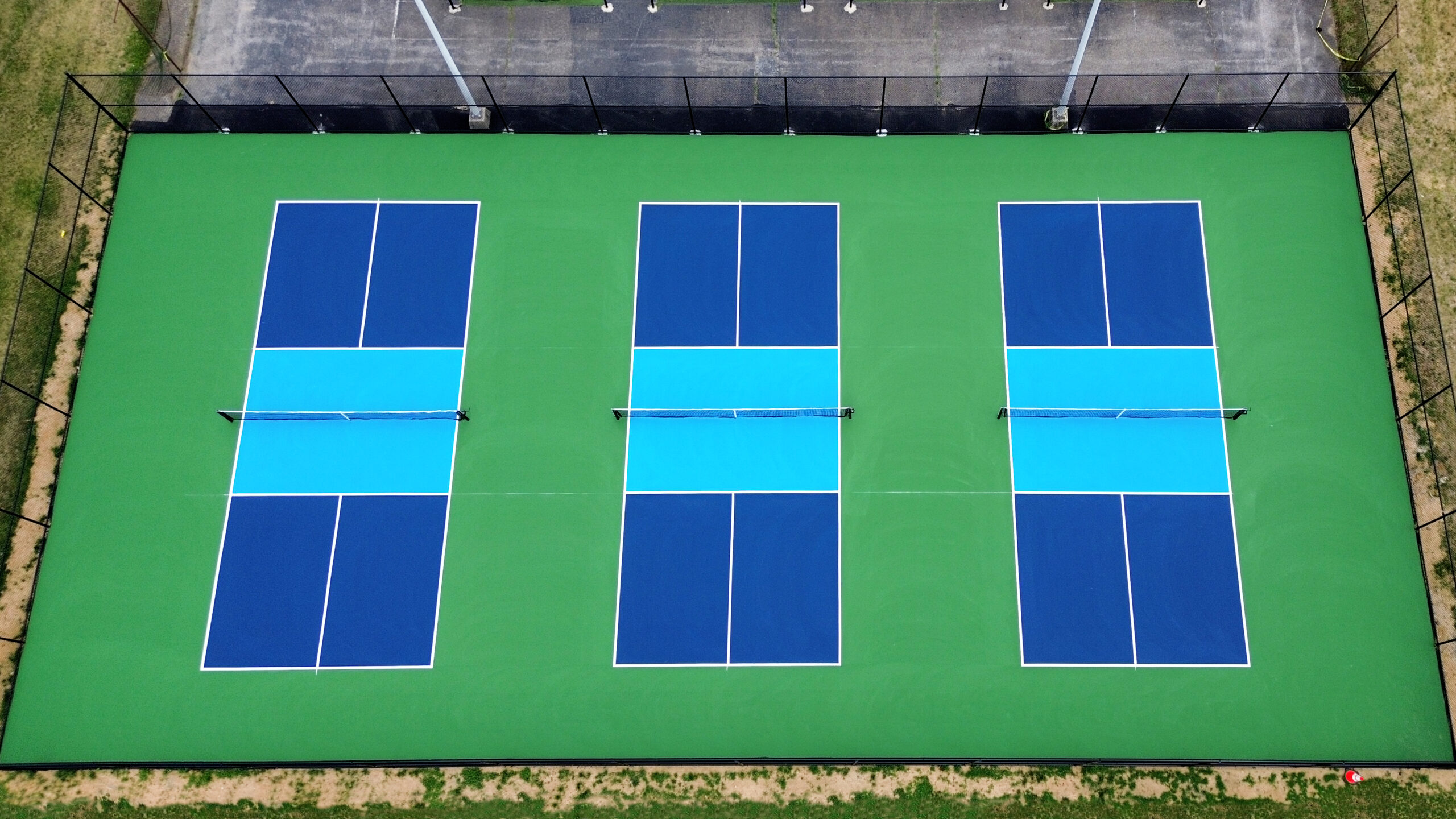Pickleball Court Construction Cost Overview-- What to Expect
Pickleball Court Construction Cost Overview-- What to Expect
Blog Article
Lasting Practices in Pickleball Court Building You Should Know
As the appeal of pickleball remains to climb, so too does the need for sustainable methods in court building and construction. This technique not only addresses ecological issues but additionally enhances the longevity and performance of the courts. From selecting green materials to implementing reliable water drainage and energy-saving lighting options, there are countless techniques to consider. The effect of these methods extends much past the court itself. Understanding just how each aspect contributes to an extra lasting future invites even more expedition right into the complex balance between entertainment growth and ecological stewardship.
Selecting Eco-Friendly Products
Picking environmentally friendly products is a vital step in the construction of lasting pickleball courts. The option of lasting materials not just reduces ecological impact but additionally enhances the long life and performance of the court. Trick products include recycled rubber for the surface area, which uses superb sturdiness and shock absorption while drawing away waste from land fills.
Furthermore, utilizing locally sourced materials lowers transportation exhausts and sustains regional economic situations. Pickleball court construction. Utilizing native hardwoods for secure fencing and seats can give a sustainable visual while making certain durability against the aspects.
Including permeable materials for court structures can better contribute to sustainability by permitting all-natural water drainage and decreasing drainage. These options not only protect regional environments but additionally advertise healthier play environments.
Reliable Drainage Solutions
While the choice of environment-friendly products is essential, carrying out effective water drainage options is just as crucial for preserving sustainable pickleball courts. Proper drain not just secures the court surface from water damages yet likewise reduces erosion and drainage, advertising environmental integrity.
Effective water drainage systems can consist of absorptive paving, which enables water to penetrate the ground as opposed to merging on the surface area. This reduces the likelihood of standing water, which can cause mold and various other upkeep issues. In addition, incorporating purposefully placed drain channels and swales can guide excess water far from the court area, ensuring a completely dry playing surface and preventing dirt disintegration.
Making use of native plants in the landscaping around the courts can additionally enhance water drainage by absorbing excess water and lowering drainage. These plants need much less irrigation and advertise biodiversity, lining up with sustainable techniques.
In addition, it is important to consistently keep the drainage system to guarantee its long-lasting efficiency. This includes cleaning debris and monitoring for obstructions. By focusing on effective drain remedies, pickleball court constructors can significantly contribute to the sustainability and long life of the facility, inevitably benefiting both gamers and the atmosphere.
Energy-Efficient Lighting Options
As the need for pickleball remains to expand, integrating energy-efficient illumination choices into court style has actually become increasingly crucial for sustainability. Typical illumination systems often consume extreme energy, adding to greater operational prices and environmental influence. Adopting modern-day, energy-efficient technologies is necessary for both brand-new buildings and improvements.
LED (Light Emitting Diode) illumination stands apart as a top option due to its durability and energy cost savings (Pickleball court construction). Contrasted to standard illumination, LEDs use roughly 75% much less power and can last as much as 25 times much longer, considerably lowering maintenance expenses. Moreover, the directional nature of LED lights lessens light contamination, ensuring that lighting is concentrated on the court as opposed to surrounding locations.

Lasting Surface Area Alternatives
Exploring lasting surface area alternatives for pickleball courts has obtained grip among players and building contractors alike. The emphasis on eco-friendly materials not only straightens with the expanding ecological awareness yet also enhances the performance and sturdiness of the courts.
This material supplies exceptional shock absorption, decreasing the risk of injuries for gamers while promoting sustainability. These ceramic tiles are simple to replace and install, and their adaptability allows for various court setups.
All-natural grass courts are additionally becoming a lasting choice, promoting biodiversity and decreasing the heat island effect. Nonetheless, they need routine upkeep and water, which may not align with all sustainability goals.

Water Preservation Techniques

Another efficient technique entails the installation of rainwater harvesting systems. These systems keep and collect rainwater for usage in keeping court surface areas and landscape design. This technique not only preserves drinkable water but also decreases dependence on local resources.
Furthermore, using drought-resistant landscaping around the courts is important. Indigenous plants need dig this much less water and are better adjusted to neighborhood climate conditions, therefore decreasing total water intake. Additionally, making use of effective watering systems, such as drip watering, makes sure that water is delivered straight to plant origins, minimizing evaporation and waste.
Final Thought
Including sustainable practices in pickleball court building and construction dramatically contributes to ecological preservation and resource effectiveness. Using environmentally friendly products, applying reliable water drainage solutions, and adopting energy-efficient illumination choices can considerably lower ecological influence. Checking out lasting surface area choices and employing water conservation methods boost the total sustainability of these entertainment facilities. By prioritizing these methods, straight from the source the building and construction of pickleball courts can straighten with wider environmental goals while advertising long life and capability within neighborhoods.
As the popularity of pickleball continues to rise, so as well does the need for sustainable techniques in court building.Selecting environment-friendly materials is an important step in the building and construction of lasting pickleball courts. By focusing on energy-efficient lighting options, pickleball court manufacturers can add to a much more sustainable future while satisfying the needs of stakeholders and gamers alike.Incorporating lasting surface alternatives not just boosts the performance of pickleball courts yet also leads the way for executing reliable water conservation strategies.Including sustainable methods in pickleball court building significantly adds to ecological preservation and resource performance.
Report this page